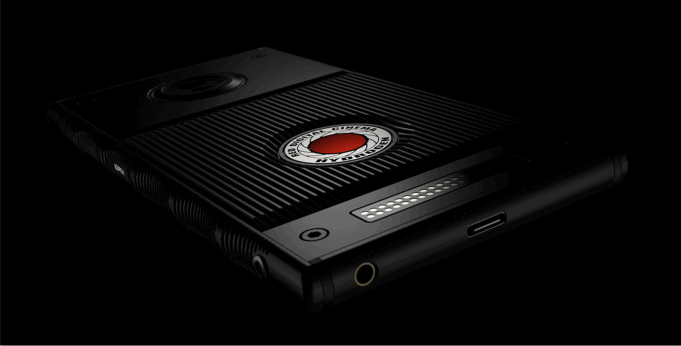We all know Elon Musk. Steve Jobs. Bill Gates. Jeff Bezos.
But have you heard of Jim Jannard?
You might not instantly recognize the name, but you’d likely recognize his first big home run: Oakley sunglasses. He founded the company in 1975 and over time turned it into a billion dollar venture.
Like most big visionaries that wasn’t enough. Next up: the cinema camera market. Sony, Arri, among other established players had long ruled Hollywood production lots. But that changed too, when, in 2005, Jannard founded Red Digital Cinema Camera (or RED). Featuring striking, even outlandish product names and jargon — Weapon, Bomb Squad, mini mags, Dragon sensor — the cameras would prove a hit. Indie filmmakers flocked to them as the images were high quality, but while expensive, offered something previously unattainable in terms of cinematic looks. Big name directors further solidified the company’s reputation by using RED camera gear on big name films: David Fincher (Gone Girl, Mindhunter), Peter Jackson (The Hobbit), and Michael Bay (Transformers, and just about everything he shoots is on RED) to name but a few.
So, Oakley was (and is) a ginormous success. Sophomore experiment RED was (and is) too.
What next then for a bold, serial entrepreneur like Jim Jannard?
Well, it’s hard to say what it entails exactly. But we do know its name:
Hydrogen.
Hydrogen One is a phone, sort of. It’s also a holographic playback device (plus 2D, 3D, AV/VR/MR). And, it looks like it will feature a modular design (like RED cameras) that will enable it to shoot high quality video footage handheld in a package not much bigger than a smartphone. In early marketing materials RED is calling the military grade looking device a “Holographic Media Machine”:
Prices starts at $1,200 (USD) for the aluminium model. That doesn’t get you much, however. Expect to pay more for modules — probably a lot more, knowing RED’s propensity for expensive (though well made and robust) accessories for its DSMC2 camera line-up. They haven’t been revealed yet so we don’t know anything else about pricing or extended functionality.
All we know about Hydrogen at this point comes from a few posts on the RED forum by Jannard himself. In addition, this prototype preview by Marques Brownlee (MKBHD) was recently posted to YouTube:
RED Hydrogen Prototype Hands-On by Marques Brownlee
(Note: the Hydrogen prototype video is trending on YouTube with over 2 million views in about just 24 hours, illustrating not only the power of someone like Marques Brownlee, but also the strong interest to know what the heck this thing is.)
At first blush I thought the idea of Hydrogen and entering the smartphone market was insane. After thinking it through some more, though, you can see this move in a few ways:
- It puts RED way out front in the mobile holographic camera market (which at this point doesn’t even exist, so once again the team would be trailblazing, as it did with the 4K RED One camera in 2010) — if you want very high quality video and holographic capability, Hydrogen will be the only choice, at least for now.
- It gives RED a hedge — if the smartphone market continues to eat its way up the camera food chain, stripping sales away from traditional players like Sony, Canon, Nikon and Panasonic, it’s conceivable cinema camera technology also finds its way into the smartphone form factor. Hydrogen is a head start. If that disruption continues to impact the market and perhaps even take away RED camera sales (Raven, Scarlet-W in particular), Jannard is ready.
- It makes RED an attractive takeover option — Apple? Google? Amazon? (okay, some of these sound just this side of crazy)
Meanwhile, an esoteric, futuristic product like Hydrogen gets people talking.
Whether or not the idea of a holographic, high-tech, and very expensive phone actually succeeds may not necessarily be the only way to win — though based on the energy, money, passion put into the project I suspect it’s the only goal for the team. After all, many a good start-up or idea has seen its original vision morph into something different. Getting into a new market early and listening to feedback and adapting, can lead to ideas that didn’t originally exist. For that to happen, of course, you have to at least be in the game. And Hydrogen could do just that.
Ground-breaking, barrier-smashing, bar-raising and badass.
— reaction by filmmaker JJ Abrams after seeing Hydrogen (per Jim Jannard on REDuser)
As for me, I am a RED user (Scarlet-W, but with no accessories yet!), but I’m not sure I have the appetite yet to invest in something I know very little about. And especially given the asking price. At this point we know very little, and have seen very little.
Watching someone react to the Hydrogen (that we have seen) is cool. To a point. Is Hydrogen a tiny RED camera that records Prores and/or RD3 files? A phone that also happens to have incredible tech that could benefit videographers and filmmakers some how? A holographic thing from the future? Or, more likely, a bit of all those things.
Yes, I’m an early adopter, but even someone like me needs a practical sense of how the product would help my work and creative process. So I guess I will keep waiting and watching (closely). As I learn more I could become interested. If it’s a portable RED camera that shoots R3D or even Prores then it could be a perfect little run and gun video monster.
However the Hydrogen project plays out for Jannard and the team over at RED, I do know that thinking big these days means an idea slightly more ambitious than, say, Cabbage Patch Kids, Pet Rocks, and Hula Hoops. Alexa, turn on the coffee machine. Amazing. These times we’re living in!



